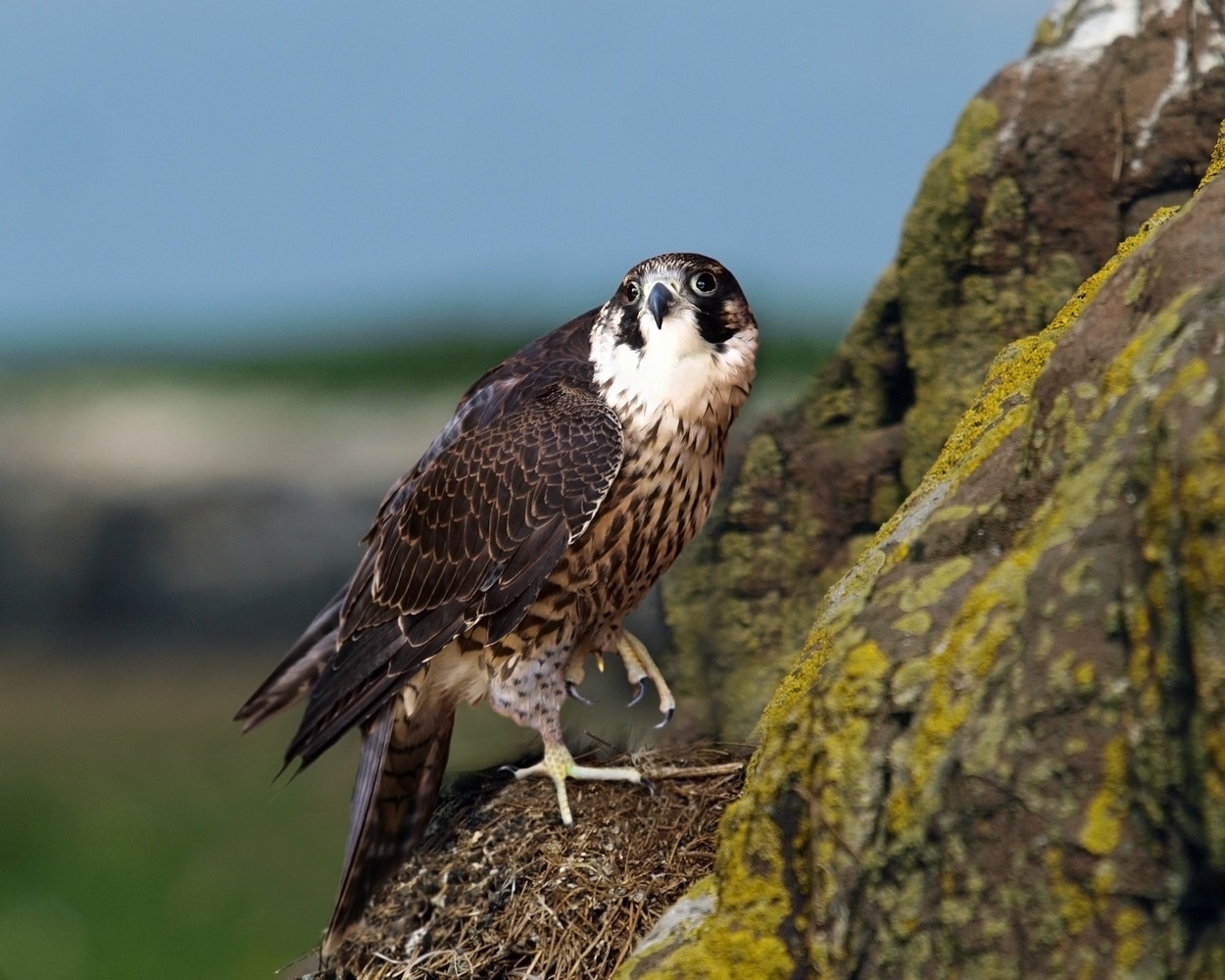Facts about the
Peregrine
Scientific name: Falco peregrinus
Bird Family: Falcons
UK conservation status: Green
At a glance
- Famed for its 300kmh dive or ‘stoop’, talons extended, killing its prey instantly.
- Peregrines were once very scarce and heavily impacted by the use of the now banned pesticide DDT.
- Peregrines are still persecuted on grouse moors and breed more successfully in cities than in the countryside.
The Peregrine is one of conservation’s most iconic birds of prey. Not because it holds the record for the fastest bird on earth (in a stoop or dive it can reach 83.3 m/s (300kmh/186 mph) killing prey like pigeons instantly) but because of the enormous efforts made here and overseas to restore populations after the species was almost wiped out by persecution and pesticide poisoning.


In North America, for example, there were no Peregrines in the eastern United States by the mid-1960s, and by the mid-’70s western populations had declined by up to 90 percent. Loss of habitat, shootings, egg collecting and other human disturbances had weakened North American populations for decades, but it was the widespread use of a popular insecticide – Dichlorodiphenyltrichloroethane or DDT – that caused a near global crash.
Sitting at the top of the food chain, DDT accumulated in Peregrines after they consumed other birds that had fed on contaminated seeds and insects. High concentrations of a DDT metabolite called DDE prevented normal calcium production, causing thin, frail eggshells that cracked under the weight of the sitting parent during incubation. Many nests failed and populations plummeted until about just 12% of birds were left.

The subject of Rachel Carson’s hugely influential 1962 ‘Silent Spring’, DDT was banned in the US in 1972, in the UK in 1986, and finally banned for agricultural use across the globe by 2001 (limited use is still permitted for malarial control). Conservationists worked to restore North American Peregrines, and it was declassified as a federally endangered species in 1999.
A worldwide species, US populations are currently thought to be stable or increasing. In Europe the population is estimated to be increasing. In the Arctic region it’s estimated to be stable, and the overall trend in North Africa is thought to be stable, although there may be some local declines.

Here in the UK the Peregrine has had very mixed fortunes. War-time control by the Air Ministry because they hunted carrier-pigeons virtually eradicated the Peregrine as a breeding bird in southern England. Recovering populations then followed the ‘DDT declines’ in North America, and by 1963-64 80 per cent of British peregrines had been lost. Even before then egg collectors had robbed so many nests that in some districts of southern England, Wales and northern England, a high proportion of pairs lost both first and repeat clutches every year.
On top of that, as conservationist and raptor expert Derek Ratcliffe stated in ‘The Peregrine Population of Great Britain in 1971’ “relentless gamekeeper persecution seems to have been largely responsible for the more or less permanent desertion during this century of a fairly large number of former Peregrine nesting places on relatively small crags on the grouse moors of the Peak District, Craven Pennines, North York Moors, Bowland Fells and Cheviots”.
Nowadays, Peregrine populations have recovered substantially. A 2018 survey estimated the breeding population here at 1,769 pairs, 22% up on the previous large scale survey carried out in 2002. Remarkably for a bird once considered to be almost the epitome of ‘wilderness’ and largely confined to upland sites and sea cliffs, Peregrine populations have especially increased in urban centres. As many as 30 pairs of Peregrines now breed in London (the second-highest urban peregrine falcon population in the world after New York), and Peregrines are now nesting on tall buildings, cathedrals and churches across the country.
In fact, urban pairs are now more successful than open country ones. That’s partly down to the availability of prey (almost every town or city has breeding Feral Pigeons which Pergerines will hunt all day long), but also to the factor identified by Derek Ratcliffe back in the 1970s: illegal persecution on shooting estates, especially grouse moors.
While some persecution is undoubtedly down to so-called ‘pigeon fanciers’ (who blame Peregrines for taking prized racing pigeons) and a small, organised group stealing chicks for the falconry trade, the continued absence of Peregrines from suitable upland habitat can largely be laid at the door of the shooting industry.
As Mark Thomas, the RSPB Head of Investigations UK, put it in 2021 when responding to confirmation that a Peregrine found dead on a driven grouse moor in the Peak District National Park had been poisoned: “Time and again, we are seeing birds of prey shot, trapped or poisoned on grouse moors. The link between illegal killing of peregrines and other raptor species and driven grouse shooting has never been clearer.”

